CKMmatrix withlattice QCD –the
advertisement
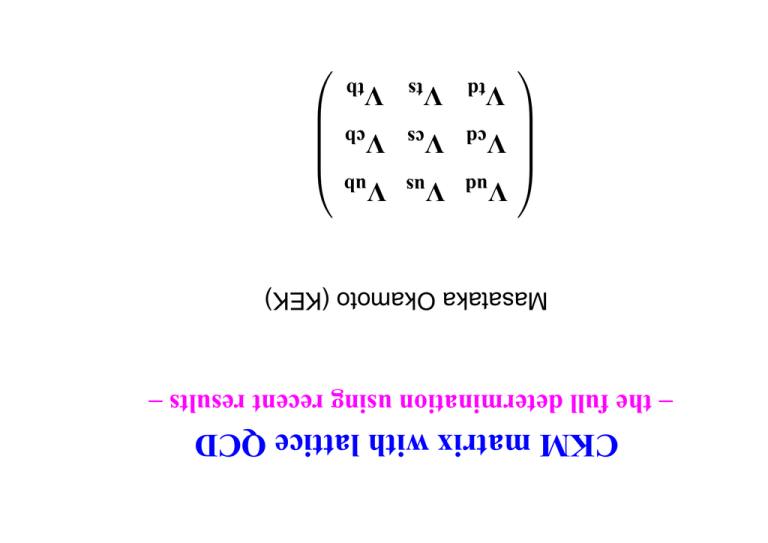
CKM matrix with lattice QCD
– the full determination using recent results –
Masataka Okamoto (KEK)
V V
V
ud us ub
V
Vcs Vcb
cd
Vtd Vts Vtb
Prologue
CKM matrix — parameter in Standard Model
V
=
CKM
−Aλ2
Aλ3 (1−ρ−iη)
Vts
Vtd
1 − λ2 /2
−λ
Vcs
Vcd
λ
1 − λ2 /2
Vus
Vud
Vub
Aλ3 (ρ−iη)
Vcb
Aλ2
Vtb
1
VCKM
weak eigenstates ←→ mass eigenstates
VV † = 1 =⇒ 4 independent parameters {λ, A, ρ, η}.
role of Lattice QCD:
calculate hadronic amplitudes (nonpertubative effects) from 1st principles
LQCD
“CKM matrix with lattice QCD” VCKM
For each CKM element, there exists hadronic processes whose amplitudes
can be reliably calculated from LQCD —
gold-plated quantities: at most one hadron in initial/final states.
Vud
Vus
Vub
π → lν K → πlν B → πlν
Vcs
Vcb
Vcd
D → πlν D → Klν B → D(∗)lν
D → lν Ds → lν
V
V
ts
tb
Vtd
hBd |Bd i
hBs |Bs i
hB|Bi, hK|Ki, sin (2β) =⇒ {ρ, η}
Given recent developments (unquenching, improved actions, machines etc.),
LQCD
we are now in a good position for the full determination of VCKM .
First result in unquenched QCD (M.O, hep-lat/0412044)
Lat
VCKM
|Vud |
0.9744(5)(3)
|Vcd |
=
0.24(3)(2)
|Vtd |
8.1(2.7)×10−3
|Vus |
|Vub |
3.9(1)(3)×10−2
0.97(10)(2)
|Vcb |
|Vcs |
3.5(5)(5)×10−3
0.225(2)(1)
|Vts |
3.8(4)(3)×10−2
|Vtb |
0.9992(0)(1)
value(lat.err)(exp.err)
λ = 0.225(2)(1) , A = 0.77(2)(7) , ρ = 0.16(28) , η = 0.36(11)
• |Vus |, |Vub |, |Vcd |, |Vcs |, |Vcb | and {λ, A} obtained from
5 semileptonic decays with n f = 2 + 1 LQCD calc.(by FNAL/MILC)
• rest of |VqQ | and {ρ, η} obtained with CKM unitarity & sin (2β)B→ψK result
NOTE: theory inputs (for nonperturbative QCD effects) are LQCD only.
A purpose of this talk
Lat in 2005
Present a World Average (WA) of VCKM
(along a review on recent results)
using current best results for gold-plated quantities.
For WA, I exclude:
• non-gold-plated quantities (ε0 /ε etc.)
• quenched (n f = 0) lattice QCD
• non-lattice model calculations (Light-cone sum rule etc.)
• inclusive decays (B → Xlν etc.)
This is a biased WA, but (I believe) such an average is useful, at least, to
announce the status/ability of LQCD.
Outline of this talk
CKM magnitude |VqQ |
• D meson decays =⇒ |Vcd |, |Vcs |
• B meson decays =⇒ |Vub |, |Vcb |
• (K meson decays =⇒ |Vus | )
CKM phase {ρ, η}
• B meson mixing, f B2q BBq
• (K meson mixing, BK )
• Unitarity Triangle analysis =⇒ {ρ, η}
Summary/Outlook
Topics not covered in this talk
I apologize for not covering topics (in HQ session) below: topic (presenter)
Heavy hadron spectra and heavy quark masses
• QQ̄ mass (Gottlieb), Heavy-light meson (Koponen, Foley)
• mc (Nobes), mb and HQET (Sommer, Garron, and Negishi)
Other developments
• Renormalon (Pineda), Pionic coupling (Becirevic)
• B mixing in P.T (Palombi) and in quenched QCD (Blossier)
• N.P tuning of action (Lin), Radiative transitions in cc̄ (Richards)
• J/ψ-Hadron interaction (Yokokawa), heavy quark potential (Koma)
CKM magnitude from
D meson decays
D → π(K)lν, D(s) → lν
V V
V
ud us ub
V
Vcs Vcb
cd
Vtd Vts Vtb
• Check LQCD (for B physics)
D→π/K
by comparing LQCD results ( f +
, fD(s) ) with Exp’t (|Vcq | input)
• Determine |Vcq | by combining LQCD+Exp’t
Semileptonic decay (one example) :
|Vcs | from semileptonic D → Klν decay
Experiment
νl
W+
l+
D
K
≡ Γ(D → Klν) ∝
Z q2
max
0
dq2 | f+ (q2 )|2 |Vcs |2
(q = pD − pK )
Lattice
hK(pK )|V
µ
|D(pD )i
=
f+ (q
+
2
)
f0 (q
pD + p K −
m2 − m 2
D
K
q
q2
2
2
2 mD − m K µ
)
q
q2
µ
D → πlν and D → Klν results
FNAL/MILC, hep-ph/0408306;PRL (Mackenzie’s poster)
n f = 2 + 1 (MILC “coarse”), improved staggered light + FNAL(clover) heavy
small χfit error,3%; finite-a,9% =⇒ total 10% error
1.5
f0,+
1
Nf=2+1 (FNAL/MILC)
exp’t (BES)
exp’t (FOCUS)
1.5
Nf=2+1 (FNAL/MILC)
exp’t (BES)
f
+
f0
f+,0
0
0.5
2
f+
1
f0
D−>πlν
D−>Klν
0.5
1
2
2
q [GeV ]
0
1
2
2
q [GeV ]
2
Agree with Exp’t for D → K(π)lν (both norm & shape)
=⇒ credibility of B → πlν result
See Kronfeld’s poster for more comparisons with Exp’t.
D, B physics with staggered u, d, s + Wilson(NRQCD) c, b
(M. Wingate et.al., 2001)
• compute staggered propagator hχ̄(x)χ(y)i ( =⇒ smaller mq accesible!)
• convert stag quark (1-comp) prop → “naive” quark (4-comp) prop:
Ω(x)† hχ̄(x)χ(y)iΩ(y) = hψ̄(x)ψ(y)i
with
Ω(x) = γ0x0 γ1x1 γ2x2 γ3x3
• combine light naive + heavy Wilson in 2-pt and 3-pt functions:
2
4
M ≈ m +m , m +m + , m +m + ,···
D
u
c
u
c
u
c
a
a
D
(t) ∝ e−MD t → e−(mu +mc )t
C2,3
=⇒ No doubling in 2-pt/3-pt functions!
Succesfully applied to FNAL/MILC,HPQCD calculations of
fD(s) , fB(s) , D → π(K), B → π
Chiral exptrapolation (ml → mud ) for D → π form factor
(1) χ fit with Staggered χPT (Aubin&Bernard)
f = A(1 + δ f SχPT ) + Bml
δ f SχPT contains (staggered) χ-log:
1 P,A,T,V,I 2
2
M
16 ∑ξ
π,ξ log(Mπ,ξ ) × nξ
2
2
Mπ,ξ
=
2µm
l + a δξ ( =⇒ χ-log diluted)
1
0.8
2
(aEπ) =0.35
2
(aEπ) =0.45
Linear
SχPT
D−>π
f+
Constants in SχPT fit:
0.6
2
0
fπ , gDD
∗ π & δξ , δA,V (fixed from light physics)
Free parameters: A, B only
0.4
Previous
FNAL/MILC
mud ms/8
0
(2) Linear χ fit: f = A0 + B0 ml
ms/2
0.01
val
sea
0.02
0.03
ml =ml
Fit (2) agrees with (1) within ≈3%
=⇒ insensitive to fit form with ml ≤ ms /2
Leptonic decay (one example):
|Vcd | from leptonic D → lν decay
Experiment
νl
W+
l+
≡ Γ(D → lν) ∝ | f D |2 |Vcd |2
D
CLEO-c will measure them to 2–3% accuracy; 8% now (Lepton-Photon’05)
Lattice
h0|Aµ |D(p)i = fD pµ
D → lν ( fD ) results
FNAL/MILC, hep-lat/0506030
(Simone’s poster) n f = 2+1, stag light
SχPT fit to Partially Quenched data
1.40
1/2
val
1.30
1.10
1.20
s
1/2
s
fD mD /fDmD
mq
sea
= mq
a = 0.12 fm (MILC coarse)
SχPT fit (to 60 PQ points)
2
SχPT fit (δa ->0)
1.00
0.0
0.2
0.4
0.8
0.6
1.0
1.2
mq/ms
CLEO-c Exp’t,
updated@Lepton-Photon’05
+07
fD = 223(16)sta (−09
)sys MeV
(with |Vcd | = |Vus | = 0.225)
B (D → µν) =
+29
4.45(67)(−36
) × 10−4
⇓
fD = 201(03)sta (17)sys MeV =⇒
∼9% error (finite-a& χfit dominate)
n =2
fD f
|Vcd | = 0.250(22)lat (21)exp
new!
+20
= 202(12)sta (−25
)sys MeV (CP-PACS, prelim, next slide)
Agree with exp’t for f D =⇒ credibility for f B
Ds → lν ( fDs ) results
FNAL/MILC, hep-lat/0506030
(Simone’s poster)
n f = 2+1, stag light + FNAL heavy
0.50
3/2
φs (GeV )
Partially Quenched SχPT fit ( δa - > 0)
0.40
Partially Quenched SχPT fit
0.45
2
0.35
0.30
0.00
0.01
0.02
2
0.03
CP-PACS, preliminary
(Kuramashi’s talk)
n f = 2, clover light + Tsukuba heavy
0.35
fDs [GeV]
0.04
0.3
fPS(A4)
fPS(Ak)
expt.
linear extr.
0.25
0.2
2
a (fm )
0
0.05
0.1
0.15
0.2
0.25
a(r0) [fm]
+07
fDs = 238(11)sta (−27
)
sys MeV
∼12% error (finite-a error largest)
fDs = 249(03)sta (16)sys MeV
∼7% error (finite-a error largest)
n f =0 results with Overlap/DW:(Dong’s talk / Chiu et al, hep-ph/0506266)
CLEO-c will measure f Ds .
Leptonic/Semileptonic ratio
CKM factor |Vcq | canceled in the ratio ( =⇒ a good test of LQCD):
Rcd ≡
s
B (D → lν)
f
|V
/ cd |
D
∝
·
B (D → πlν)
/ cd |
f+D→π (0) |V
LQCD(n f = 2+1), FNAL/MILC
Rcd = 0.22(2)
Exp’t, CLEO-c’05 etc
Rcd = 0.25(2)
Exp’t
(CLEO’05)
PDG’04
LQCD
(FNAL/MILC)
CP−PACS
200 250
fD [MeV]
2 3 4 5
3
Br(D−>πlν)x10
0.20 0.25
Rcd
Agree with Exp’t for D physics. =⇒ credibility for B physics
CKM magnitude from D decays
B (D→πlν)
2
R
|Vcd |semi−lep
∝
,
or
dq2 | f (q2 )|2
+
|Vcd|
B (D→lν)
2
|Vcd |lep
∝
| f |2
D
|Vcs|
Nf=2+1
(FNAL/MILC)
semi−lept
Nf=2+1
(FNAL/MILC)
leptonic
PDG’04
0.2
0.25
0.8
|Vcd |Lat05 = 0.245(22)
1
, |Vcs |Lat05 = 0.97(10)
CKM magnitude from
B meson decays
B → π(D)lν, B(s) → lν
V V
V
ud us ub
V
Vcs Vcb
cd
Vtd Vts Vtb
• Agreements with Exp’t for D decays
B→π
give us confidence in similar quantities for B decays ( f +
,
f
B(s) ...)
• Determine |Vxb | by combining LQCD+Exp’t
B → πlν with n f = 2 + 1 LQCD
stag light + NRQCD heavy
HPQCD
stag light + FNAL heavy
FNAL/MILC
2.5
Nf=3 (HPQCD)
Nf=3 (FNAL/MILC)
2
f+
1.5
f0
1
0.5
0
B−>πlν
0
5
10 2
15 2
20
25
Gulez’s talk
fixed mlsea
Mackenzie’s poster
mlval = mlsea
Systematic error
ml extrapolation
current matching
FNAL/MILC
HPQCD
4%
4%
1%
11%
Total syst
9%
finite-a, 1/mQ
4%
q2 dependence
9%
5%
11%
q [GeV ]
Using branching ratio B (q2 ≥ 16 GeV2 ) by CLEO’03+Belle’04,
|Vub |×103 = 3.48 (29)sta (38)sys (47)exp [FNAL/MILC; (8+11+13)%=19% error]
|Vub |×103 = 4.04 (20)sta (44)sys (53)exp [HPQCD; (5+11+13)%=18% error]
q2 dependence of B → π form factors
1.5
BK
polynomial
B−>πlν
1
f+
Method-1 Becirevic&Kaidalov (BK)
ansatz (central value)
f+ (q
FNAL/MILC
f0
0.5
0
0
LQCD hard
Expt OK
5
10 2
15 2
LQCD OK
Expt hard
20
F
F
2
2
,
f
)
=
0 (q ) =
(1 − q2 /MD∗ )(1 − Aq2 )
(1 − Bq2 )
Method-2 polynomial ansatz
(for error estimate)
0
2
4
f+,0 (q2 ) = c+,0
+ c+,0
q2 + c+,0
q4 + · · ·
25
q [GeV ]
Difference betw. M-1 and M-2 for |Vub | (∝
4%
11%
R
dq2 f+ 2 )−1/2 is:
2 ) [mostly interpolation]
with B (16 GeV2 ≤ q2 ≤ qmax
2 ) [long extrapolation]
B (0 GeV2 ≤ q2 ≤ qmax
with
Q. How can we reach lower q2 ?
Solution-1. combine LQCD (higher q2 ) + non-LQCD (lower q2 )
(1) Arnesen et.al., hep-ph/0504209
LQCD(higher q2 ) + disp relation(q2 dep) + SCET(q2 = 0)
=⇒ δ|Vub | ≈ 13%
disp relation is not a model, but an analyticity bound.
Mackenzie’s poster: similar attempt
(2) Flynn’s poster (Albertus et.al., hep-ph/0506048)
LQCD(higher q2 ) + disp relation (q2 dep) + LCSR(q2 =0.80) (1- q ) f (q )
0.6
≈ 11% (prelim.)
2
=⇒
δ|Vub |
(3) Fukunaga&Onogi, hep-lat/0408037
dΓ
2
f = f+
0.4
f = f0
0.2
0.0
0
5
10
15
2
2
LQCD(higher q2 ) + disp relation + dqexp
2 (q dep) + f + = f 0 (q = 0)
=⇒ δ|Vub | ≈ 14%
|Vub | more accurately determined than LQCD alone (δ|Vub |Lat05 ≈ 18%)
20
q2
25
Solution-2. direct LQCD simulation using “moving NRQCD”
Moving NRQCD is a generalized version of NRQCD
in B meson moving frame (u = pB /MB 6= 0):
LmNRQCD = ψ† iDt + iv · D +
where uµ = γ(1, v), γ−1 =
√
D2
v · D2
−
+··· ψ
2γm
2γm
1 − v2 .
mNRQCD allows B → πlν calc at lower q2 with smaller pπ :
For v ≈ 0.75, pπ = 1GeV =⇒ q2 = (pB − pπ )2 = 0
• proposed >5 years ago (Hashimoto&Matsufuru’96, Sloan’98 etc.),
but suffered from large statistical error.
• Foley et al (@Lat’04) showed stat error can be reduced using a special
smearing function =⇒ v ≈ 0.7 − 0.8 works
Solution-2. direct LQCD simulation using “moving NRQCD” (cont’d)
Quenched test for f QQ¯ looks encouraging. (Dougall’s talk)
Expect B → πlν (and B → K ∗ (ρ)γ) calc at q2 ∼ 0 will follow.
B → D(∗) lν decay
B (B → D(∗) lν) ∝ |Vcb |2 |FB→D(∗) (1)|2
where w = vB · vD . Use double ratio (FNAL’99):
B → Dlν
n f = 2+1, FNAL/MILC
1.1
CDV0 B (t)CBV0 D (t)
CDV0 D (t)CBV0 B (t)
Z
dw f (∗) (w)
→
hD|V0 |BihB|V0 |Di
hD|V0 |DihB|V0 |Bi
B → D∗ lν
SχPT calc. completed (Laiho’s talk)
0.93
0.92
F(1)
h_A1
B−>D
1
0
Nf=2+1 (FNAL/MILC)
Nf=0 (FNAL’99)
0.01
ml
0.02
0.91
0.9
0.89
0.03
0
0.025 0.05 0.075 0.1
m_pi^2
0.125 0.15
n f = 2 + 1 calc. underway (FNAL)
=⇒ more precise |Vcb |
Using HFAG’04 avg for |Vcb |F (1),
|Vcb |Lat05 = 3.91(09)lat (34)exp ×10−2
Cusp (in χPT) disappears in SχPT
FB→D (1) = 1.074 (18)sta (15)sys
CKM magnitude from B decays
B (B→πlν)
2
R
|Vub |semi−lep
∝
,
and
dq2 | f (q2 )|2
+
3
|Vub|x10
|Vcb |semi−lep ∝
[|Vcb |∗F (1)]exp
F (1)
2
|Vcb|x10
Nf=2+1
2
2
(FNAL/MILC)
B−>D
B−>π(q >16GeV )
Nf=2+1
(HPQCD)
PDG’04
2
3
4
5
3
4
5
|Vub |Lat05 = 3.76(68)×10−3 , |Vcb |Lat05 = 3.91(35)×10−2
CKM magnitude |Vus | from K decays (see Dawson’s review for details)
K → πlν (use double ratio, as in B → Dlν)
preliminary unquenched results with Wilson-light:
0.954(9)
(n f = 2, JLQCD, Tsutsui’s talk)
f (0) =
,
0.962(6)(9) (n f = 2 + 1, FNAL, hep-lat/0412044)
+
0.960(5)(7)
(n f = 0, Becirevic et al, hep-lat/0403217)
n f = 2 calc. with DWF (RBC, Kaneko’s poster)
calc. with stag quarks is interesting (needs SχPT)
|Vus |semi−lep = [|Vus | ∗ f+ (0)]KTeV / f+ (0)n f ≥2
= 0.2250 (24)lat (12)exp
K → lν
+17
fK / fπ = 1.200(4)(−05
) (n f = 2 + 1, MILC)
+12
=⇒ |Vus |lep = 0.2238(−32
) (Bernard’s poster)
|Vus|
Nf>2
=
semi−lept
Nf=2+1
leptonic
PDG, 2004
E865, 2003
+
K e3
0
e3
K
PDG’04
KTeV, 2004
NA48, 2004
KLOE, 2004
0.22
unitarity
0.20
0.21
0.23
0.22
V f (0)
|Vus |Lat05 = 0.2244(14)
us +
CKM matrix with LQCD (2005)
(from leptonic/semileptonic decays)
|Vud |
|Vcd |
0.245(22)
|V
td |
|Vus |
|Vub |
|Vtb |
|Vts |
3.91(35)×10−2
0.97(10)
|Vcb |
|Vcs |
3.76(68)×10−3
0.2244(14)
5/9 determined with LQCD(n f ≥ 2)+Exp’t.
CKM unitarity check with LQCD
(|Vcd |2 + |Vcs |2 + |Vcb |2 )1/2 = 1.00(10) → using CKM unitarity...
CKM matrix with LQCD (2005)
(from leptonic/semileptonic decays + unitarity)
|Vud |
0.9745(3)
|Vcd |
0.245(22)
|V
td |
|Vus |
|Vub |
3.91(35)×10−2
0.97(10)
|Vcb |
|Vcs |
3.76(68)×10−3
0.2244(14)
|Vts |
3.79(53)×10−2
|Vtb |
0.9992(1)
8/9 determined.
Wolfenstein parameters: λ = 0.2244(14) , A = 0.78(7)
To extract (ρ, η) and |Vtd |, use LQCD results for f B2 BB & BK
CKM phase from
B and K meson mixings
V V
V
ud us ub
V
Vcs Vcb
cd
Vtd Vts Vtb
{λ , A , ρ , η}
• Determine {ρ, η} and |Vtd |
• Test Standard Model, if good precision achieved
(1) B − B̄ mixing
∆MBd(s) ∝ BBd(s) fB2d(s) |Vtb∗ Vtd(s) |2
0.4
hB̄0 |(b̄q)V −A (b̄q)V −A |B0 i ∝ BBq fB2q
0.6
lattice:
0.2
∆MB |εK|
~
|
V
td |
|
η
ub
(2) K − K̄ mixing
|εK | = BK η[(1 − ρ)c1 + c2 ]
0.0
~|V
β
−0.2
−0.4
−0.6
lattice:
−0.4 −0.2
0
0.2
hK̄ 0 |O∆S=2 |K 0 i ∝ BK fK2
ρ
0.4
0.6
0.8
1
fB(s) result
fB(s) is similar to fD , for which we have seen an agreement with Exp’t
HPQCD, hep-lat/0507015 (Shigemitsu&Allison’s talks)
n f = 2+1 (MILC conf), impr stag light + NRQCD heavy
1.3
1.2
Φ(Bs) / Φ(Bq)
1.1
Coarse lattice, Partially Quenched
Coarse lattice, Full QCD
Fine lattice, Full QCD
Full QCD continuum ChPT
Linear fit, no chiral logs
Full QCD Staggered ChPT
JLQCD (Nf=2)
Linear fit to JLQCD
χ fits with SχPT, χPT, linear ansatz
=⇒ only 3% difference
insensitive to fit form with mq <ms /2
deviation from JLQCD(n f =2) linear fit
fB = 216(9)sta+χfit (19)PT (7)others MeV
1
0.9
0
0.5
total 10% (PT O(α2 ) error largest )
1
1.5
mq/ms
f Bs / f B
fBs / fB = 1.20(3)sta+χfit (1)others
PT error cancel =⇒ total 3%
p
MBs /MB vs. mq /ms
fB(s) result (cont’d)
WA(Nf=
>2)
ICHEP04
Hashimoto
HPQCD
(Nf=2+1)
150
200 250 200 250 300
fB [MeV]
fBs [MeV]
1.10 1.20 1.30
fBs/fB
• reasonable agreement with previous averages for f B and fBs
• good agreement and better accuracy for the ratio f Bs / fB
(smaller χfit error with staggered quarks)
• χ-log effect included in Hashimoto’s ICHEP’04 avg
BB(s)
No new/updated unquenched BB(s) result this year.
(n f = 0 study with Overlap light, Blossier’s talk)
Best result: JLQCD’03
n f = 2, clover light + NRQCD heavy
+56
+56
B(mb ) = 0.836(27)(−62
)
,
B̂
s /B̂ = 1.017(16)(−17 )
n f =2+1
With HPQCD’s f B
(s)
fB
f Bs / f B
q
⇓
,
=⇒ |Vtd |Lat05 = 7.4(0.8)×10−3 )
B̂B = 244(26)MeV,
(|Vtd |PDG04 = 8.3(1.6)×10−3 )
q
+47
)
δ(|V
B̂Bs /B̂B = 1.210(−35
td |/|Vts |) = 3−4% with forthcoming ∆MBs
BK (See Dawson’s review for details)
new preliminary n f = 2+1 result with improved staggered quark
(HPQCD, Gamiz’s talks)
¯
BKMS (2GeV) = 0.630(18)sta (15)χfit (30)disc (130)PT
• MILC “coarse” lattice (a−1 = 1.6 GeV)
• large error from 1-loop PT matching; α(1/a) ≈ 0.4, α2 ≈ 0.2
=⇒ need 2-loop/NP and smaller a
• linear χfit =⇒ need χfit using SχPT formula (Van de Water’s talk)
BK(2GeV)
0.9
HPQCD’05
0.8
0.7
UKQCD’04
0.6
0.5 WA@ICHEP04
0.4
(Hashimoto)
RBC’04
0.3
Nf=0
Nf=2
Two more n f = 2+1 studies
(Cohen’s talk, Lee’s poster)
Below I use HPQCD’s in UT analysis
Nf=2+1
Unitary Triangle analysis with LQCD (2005)
Theory inputs (LQCD only as a rule)
• B → πlν form factor (n f = 2 + 1, FNAL/MILC+HPQCD, preliminary)
p
=⇒ |Vub | ∝ ρ2 + η2
• f (n = 2 + 1, HPQCD) + BB (n f = 2, JLQCD’03)
B
f
p
=⇒ |Vtd | ∝ (1 − ρ)2 + η2
• BK (n f = 2 + 1, HPQCD, preliminary)
=⇒ η(1 − ρ)
Exp’t inputs
• B (B → πlν), ∆MB , εK (waiting for ∆MBs ...)
• B → ψK (Belle, Babar) =⇒
sin (2β)
Unitary Triangle analysis with LQCD (2005)
Result without sin (2β)B→ψK
∆MB |εK|
0.4
0.2
~
|
V
td |
|
η
ub
0.0
~|V
−0.2
Lattice’05
−0.4
−0.6
−0.4 −0.2
0
0.2
ρ
ρ = 0.20(12)
0.4
0.6
0.8
1
[ PDG : 0.20(9) ]
η = 0.37(07)
[ PDG : 0.33(5) ]
Unitary Triangle analysis with LQCD (2005)
Result with sin (2β)B→ψK
∆MB |εK|
0.4
0.2
~
|
V
td |
|
η
ub
0.0
~|V
β
−0.2
Lattice’05
−0.4
−0.6
−0.4 −0.2
0
0.2
ρ
ρ = 0.16(7)
0.4
0.6
0.8
1
[ PDG : 0.20(9) ]
η = 0.37(4)
[ PDG : 0.33(5) ]
CKM phase {ρ, η} from UT analysis
ρ
η
LQCD’05
(w/o sin2β)
LQCD’05
(with sin2β)
PDG’04
0
0.5
0.2
0.3
0.4
0.5
ρLat05 = 0.16(7) , ηLat05 = 0.37(4)
Lat05
VCKM
=
CKM matrix with LQCD (2005)
(full determination)
|Vts |
|Vtd |
0.97(10)
0.245(22)
|Vcs |
|Vcd |
0.2244(14)
0.9745(3)
|Vus |
|Vud |
7.40(79)×10−3 3.79(53)×10−2
|Vub |
3.76(68)×10−3
|Vcb |
3.91(35)×10−2
|Vtb |
0.9992(1)
{λ , A , ρ , η}Lat05 = { 0.2244(14) , 0.78(7) , 0.16(7) , 0.37(4)}
9
4
/9 CKM elements and /4 Wolfenstein parameters fully determined
with LQCD(n f ≥ 2)+Exp’t!
Summary
It is now possbile to fully determine CKM matrix with LQCD(n f ≥ 2)
At present (2005)
Many unquenched results with staggered light quarks using MILC configs
(FNAL/MILC,HPQCD).
an agreement with Exp’t for D physics =⇒ credibility for B physics
More unquenched results using other fermions (Wilson,DWF,overlap,...)
∆M |ε |
needed for checks!
B
0.4
Lat
Typical accuracy of VCKM
is
O
(10%)
(
|V
ub |, |Vcd |, |Vcs |,...)
0.2
√
fB BB , BK to O (10%) =⇒ {ρ, η} to ≈10%
0.0
−0.2
dominated by PT or discretization errors.
η
K
~|V
td
|
|
ub
~|V
β
Lattice’05
p
good exception: new f Bs / fB BBs /BB to ≈ 3%
=⇒ more precise {ρ, η}, once ∆MBs is measured.
−0.4
−0.6
−0.4 −0.2
0
0.2
ρ
0.4
0.6
0.8
1
Outlook
I hope “CKM matrix with LQCD” will be updated every year...
In next 5 years (before 2010)
I expect/hope:
• Many unquenched results from many groups
• 2-loop/NP matching done
• finer lattices and/or highly improved actions done
• ∆MBs is measured by Exp’t
η
Lat will be ≈ 5% or better;
Typical accuracy of VCKM
|Vtd |/|Vts | to ≈ 3% =⇒ {ρ, η} to ≈5%
Ready for New Physics !?
0.4
0.2
∆MB |εK|
~|V
td
|
|
ub
0.0
~|V
β
−0.2
Lattice 201X
−0.4
−0.6
−0.4 −0.2
0
0.2
ρ
0.4
0.6
0.8
1
Acknowledgment
Thanks to:
S. Aoki, M. Artuso, C. Bernard, C. Davies, C. Dawson, Steven Gottlieb,
E. Gulez, T. Kaneko, A. Kronfeld, J. Laiho, P. Mackenzie, H. Matsufuru,
M. Nobes, T. Onogi, G. Rossi, J. Shigemitsu, J. Simone, S. Tamhankar,
for sending your materials and for private communications.
Special thanks to:
S. Hashimoto and N. Yamada for valuable discussions, and
Lat’05 organizers for inviting me here.
Backup slides
Partially Quenched f D fits
Matching between “lattice” ↔ “continuum” heavy-light current
hπ|O cont |Di = ZOhl hπ|O lat |Di
(O = Vµ or Aµ )
Quasi-non-perturbative determination for ZOhl (FNAL’01)
q
ZOhl ≡ ρO
ZVhh ZVll
• compute ZVhh , ZVll non-perturbatively from:
qq
qq
ZV hD|V4 |Di = 1 (qq = hh, ll)
q
• compute ρO (= ZOhl / ZVhh ZVll ≈ 1) perturbatively.
O (αs ) ≈ 1 − 5% (Harada et.al.; Nobes et.al.)
=⇒ O (αs2 )≤ 1%.
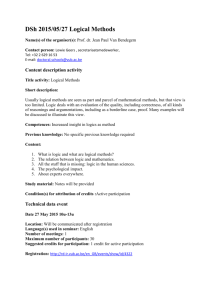

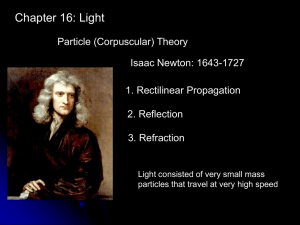
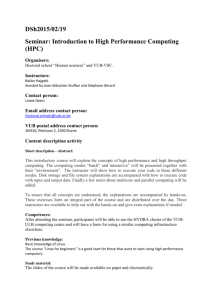
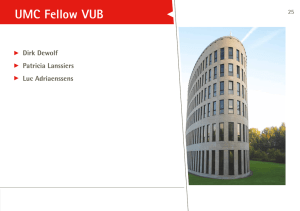
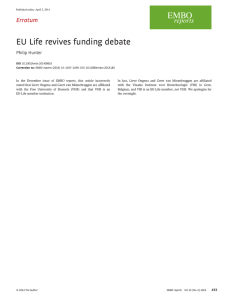
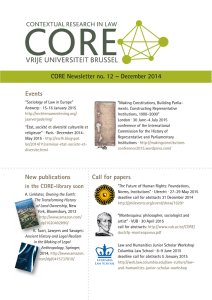

![[#DESDM-212] Submission error when using submit_run_dir](http://s3.studylib.net/store/data/007364213_1-81074dfff5f4eb5409a438dc4f05a380-300x300.png)